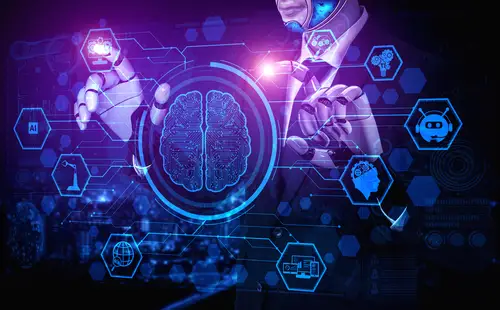Deep Learning is undeniably one of the most revolutionary and exciting areas in modern technology. As a powerful subset of artificial intelligence, it offers immense potential for transforming our lives in many ways. Our post titled “Understanding Deep Learning and Its Application” aims to unravel this complex subject with great simplicity.
The realm of deep learning extends beyond just tech giants like Google or Amazon. It is now being extensively deployed across various industries from healthcare to finance, retail, transportation and more! But what exactly are the Basics of Deep Learning? What are the applications that make it so widely sought after by businesses worldwide? And how does it impact us as individuals? Whether you’re an AI enthusiast wanting to dive deeper into the intriguing world of deep learning or someone seeking understanding about its real-world implications. This comprehensive article provides enlightening insights on these aspects! Stay tuned as we take a thrilling journey through the fascinating universe of Deep Learning.
Understanding the Basics of Deep Learning
Deep learning is a subset of machine learning that has gained considerable attention in recent years due to its ability to handle complex data sets and deliver highly accurate results. By core, deep learning is inspired by the structure and function of the human brain. Here artificial neural networks play a key role in its implementation. These neural networks are composed of multiple layers of interconnected nodes. Each layer processing different aspects of the data and passing the information to the next layer. By adjusting the weights and biases of these connections during the training process, the network can learn to identify patterns, make predictions, and solve a wide range of tasks.
One of the key characteristics of deep learning is its ability to automatically discover and learn representations from the data, eliminating the need for manual feature extraction. This is in contrast to traditional machine learning approaches where features must be carefully crafted by domain experts. By leveraging large amounts of labelled data, deep learning models can generalize well to unseen examples and exhibit high levels of performance on various tasks such as image recognition, natural language processing, and speech recognition. Training neural networks with numerous layers and millions of parameters can be computationally intensive. Powerful computational resources help effectively train deep learning models.
Additionally, large-scale datasets are essential for capturing the complexity and diversity of real-world phenomena. Despite these challenges, the potential of deep learning to revolutionize industries such as healthcare, finance, and transportation is immense. It drives researchers and practitioners to explore new techniques and applications in this rapidly evolving field.
Major Approaches and Models in Deep Learning
Deep learning encompasses a variety of approaches and models that have revolutionized the field of artificial intelligence. One major approach is convolutional neural networks (CNN), which excel at image and video recognition tasks. Recurrent neural networks (RNNs) are commonly used for sequential data processing, such as in natural language processing. Generative adversarial networks (GAN) have shown remarkable results in generating realistic images and videos. Attention mechanisms, particularly in transformers, have greatly improved the performance of deep learning models on tasks requiring handling long-range dependencies. Reinforcement learning, with algorithms like deep Q-learning, has been successful in training agents to perform complex tasks through trial and error. These diverse approaches collectively contribute to the rapid advancement of deep learning technologies.
Practical Applications of Deep Learning
Deep learning, a subset of machine learning, has revolutionized various industries by enabling machines to learn from large amounts of data and make intelligent decisions. One of the most prominent applications of deep learning is in the field of image recognition and computer vision. Deep learning algorithms have significantly improved the accuracy of tasks such as object detection, facial recognition, and image classification. This has paved the way for applications in healthcare, security, autonomous vehicles, and more. Another important application of deep learning is in natural language processing (NLP) and speech recognition.
Deep learning models have been used to develop virtual assistants like Siri and Alexa, as well as to improve language translation software. This has transformed how we interact with technology and has made information more accessible across different languages. In the field of healthcare, deep learning helps in medical image analysis, disease diagnosis, and personalized treatment recommendations.
By analyzing medical images such as X-rays, MRIs, and CT scans, deep learning algorithms can assist doctors in making faster and more accurate diagnoses. Furthermore, deep learning is making significant strides in the field of financial services. Here it is useful for fraud detection, risk assessment, algorithmic trading, and customer segmentation. These applications are helping financial institutions to better understand market trends, mitigate risks, and provide more personalized services to their customers. Overall, the practical applications of deep learning are vast and continue to expand across various industries. They offer new opportunities for innovation and improved efficiency.
Advancements and Innovations in Deep Learning
Deep learning has witnessed significant advancements and innovations in recent years, revolutionizing various industries and fields. One key development is the introduction of new neural network architectures, such as convolutional neural networks (CNNs) and recurrent neural networks (RNNs), which have greatly improved the performance of deep learning models in tasks like image recognition and natural language processing. Additionally, the rise of generative adversarial networks (GANs) has enabled the generation of realistic synthetic images and data. The use of transfer learning techniques has also gained traction, allowing pre-trained models to be adapted for new tasks with minimal additional training.
Future Prospects of Deep Learning
The field of deep learning holds immense potential for groundbreaking progress in various industries. With the continuous advancements in technology and the increasing availability of data, deep learning is poised to revolutionize fields such as healthcare, finance, autonomous driving, and more. One of the key areas of focus is improving the interpretability of deep learning models. This will enhance trust and adoption in critical applications. Additionally, the integration of deep learning with other emerging technologies like augmented reality and natural language processing will further expand its capabilities.

 Exploring the Latest Social Media Trends and How to Use Them
Exploring the Latest Social Media Trends and How to Use Them 10 Hidden iPhone Features You Didn’t Know Existed
10 Hidden iPhone Features You Didn’t Know Existed